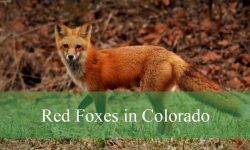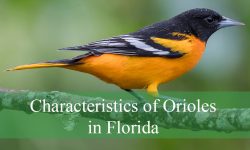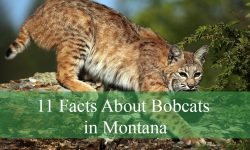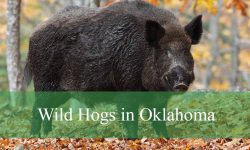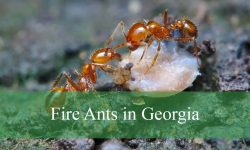While hiking through the lush forests of Washington State, I often hear the loud, unmistakable calls of jays echoing among the trees. These clever and colorful birds are some of the most fascinating to spot, thanks to their bold personalities and striking plumage.
In this guide, I’ll share insights on four common types of jays you’re likely to encounter in Washington, complete with photos and identification tips that helped me recognize them during my birdwatching adventures.
Whether wandering through urban parks or deep in the Cascades, getting to know these jays adds a lively and memorable touch to any outdoor experience in the Evergreen State.
Common Jays Found in Washington State
Steller’s Jay (Cyanocitta stelleri)
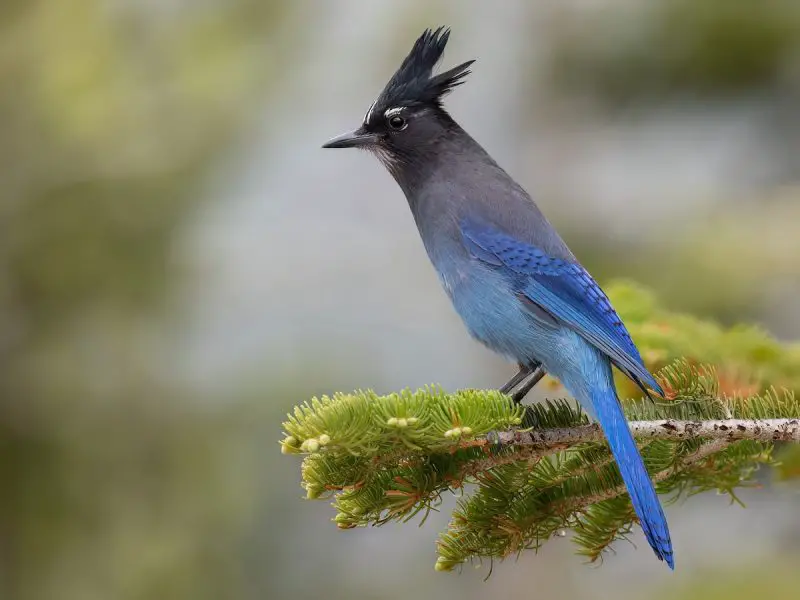
The Steller’s Jay is the most common and easily recognizable jay in Washington State. It features a striking combination of deep blue and black plumage. The head and upper chest are glossy black, complemented by a prominent crest of feathers that gives it a distinctive silhouette. Its wings and tail shine with vibrant blue feathers that can appear almost iridescent in sunlight, making it stand out among forest birds.
This jay measures about 30 to 34 centimeters (12 to 13 inches) in length, with a wingspan ranging from 40 to 46 centimeters (16 to 18 inches). It weighs between 100 and 140 grams (3.5 to 5 ounces). Steller’s Jays have a robust body and strong legs, which they use skillfully to hop and cling to tree trunks and branches. Their sharp, black beak is well-suited for cracking seeds and catching insects.
Behaviorally, Steller’s Jays are known for their bold and inquisitive nature. They are often seen in pairs or small groups, sometimes even approaching human campsites looking for food. Their vocalizations are loud and varied, including harsh “shack-shack” calls and mimicry of other birds and even mechanical sounds. This vocal versatility helps them communicate threats or locate other jays in dense forests.
In Washington, Steller’s Jays inhabit coniferous and mixed forests, especially in mountainous areas and foothills. They are year-round residents, widespread across the state from coastal rainforests to inland forests. A fun fact: Steller’s Jays are named after the naturalist Georg Wilhelm Steller, who first described them during the 18th century exploration of the Pacific Northwest.
California Scrub-Jay (Aphelocoma californica)
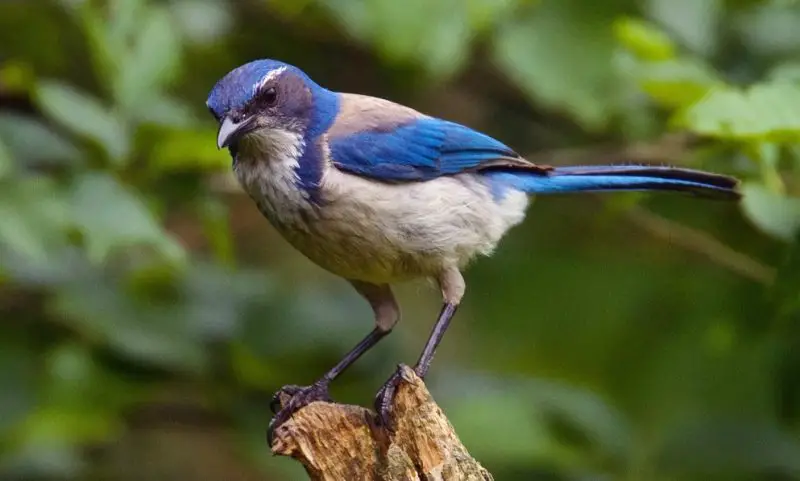
California Scrub-Jays are medium-sized birds notable for their vibrant blue and gray coloration. They have bright blue heads, wings, and tails, while their backs and underparts are soft gray. Their white throats with a subtle blue necklace and darker eye line make identification easier. Compared to Steller’s Jays, they lack a crest, giving them a sleeker head profile.
Adult California Scrub-Jays typically measure around 27 to 31 centimeters (10.5 to 12 inches) in length with a wingspan near 40 centimeters (16 inches). Their weight ranges between 70 and 100 grams (2.5 to 3.5 ounces). They are agile birds with slender bodies, well-adapted for hopping among shrubs and trees in search of food.
These jays are known for their intelligence and complex social behaviors. They are often seen caching acorns and other nuts, hiding food to retrieve later. Their calls include a harsh, raspy “shreee” sound and softer chatters used within family groups. California Scrub-Jays are territorial but can be curious and bold around humans, especially in suburban areas.
In Washington, California Scrub-Jays are mostly found in the drier, warmer southern and eastern parts of the state, including oak woodlands and shrublands. They are year-round residents in these regions. A fun fact: these jays have demonstrated impressive problem-solving skills in captivity, making them subjects of many bird cognition studies.
Woodhouse’s Scrub-Jay (Aphelocoma woodhouseii)

Woodhouse’s Scrub-Jay resembles the California Scrub-Jay but has a paler and grayer body with less vibrant blue on the wings and tail. The head and upperparts are a duller blue, and the underparts are pale gray or whitish. Unlike the California Scrub-Jay, Woodhouse’s has a more muted overall appearance, which can sometimes cause confusion between the two.
This species is slightly smaller than the California Scrub-Jay, measuring about 26 to 30 centimeters (10 to 12 inches) long, with a wingspan around 38 to 42 centimeters (15 to 16.5 inches). Their weight is generally between 65 and 95 grams (2.3 to 3.3 ounces). They have a slender build and are often seen perched upright on shrubs and small trees.
Woodhouse’s Scrub-Jays produce a series of soft, varied calls including harsh “shreak” notes and quiet chatters used to communicate with flock members. Their behavior is similar to that of other scrub-jays, including caching food and defending territories. They are somewhat shy compared to their California cousins and tend to avoid heavily populated human areas.
In Washington, Woodhouse’s Scrub-Jays are rare and mostly restricted to southeastern regions near the border with Oregon and Idaho. They prefer open woodlands and scrubby habitats. Fun fact: the Woodhouse’s Scrub-Jay was once considered a subspecies of the California Scrub-Jay but is now recognized as a separate species due to differences in genetics and vocalizations.
Blue Jay (Cyanocitta cristata)
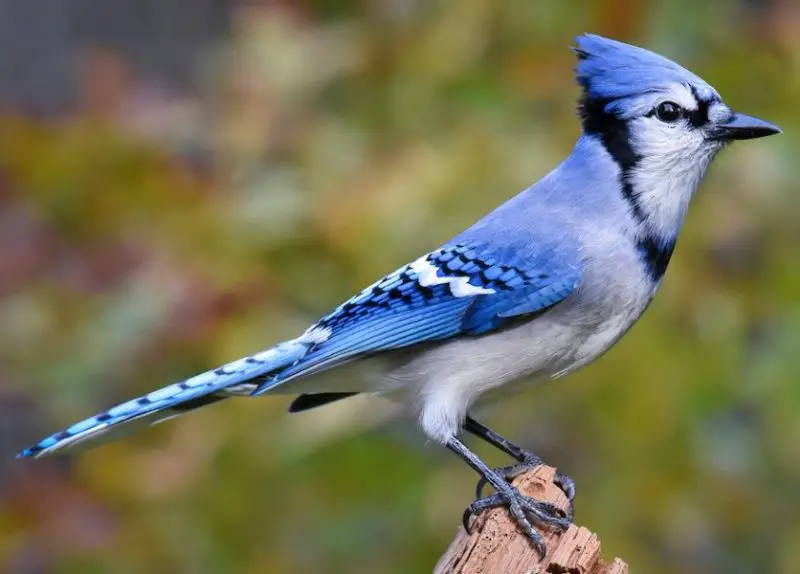
The Blue Jay is a striking and well-known bird mainly native to the eastern United States but occasionally recorded as a rare visitor in Washington. It sports bright blue upperparts with white underparts and a distinct black collar around the neck. Blue Jays have a noticeable crest on their head and bold black markings on the face, giving them a sharp and expressive look.
Blue Jays typically measure 25 to 30 centimeters (10 to 12 inches) in length, with a wingspan of 34 to 43 centimeters (13 to 17 inches). They weigh about 70 to 100 grams (2.5 to 3.5 ounces). Their strong legs and sharp bills make them versatile feeders able to crack nuts, catch insects, and scavenge.
Their vocalizations are loud and varied, including harsh “jay” calls, whistles, and mimicked sounds of hawks or other birds. Blue Jays are intelligent and social, often seen in noisy flocks, especially outside the breeding season. They cache food like acorns and can be aggressive defenders of their territory.
Although Blue Jays are rare in Washington, occasional sightings occur mostly in the western part of the state. They tend to stay in areas with deciduous trees and suburban parks. A fun fact is that Blue Jays can mimic the calls of hawks, which may help them scare off other birds or predators.
Best Places and Times to Spot Jays in Washington State
Washington State offers a variety of habitats where you can observe different jay species throughout the year. For Steller’s Jay, the best places to spot them are in coniferous and mixed forests across the Cascades, Olympic Peninsula, and foothill regions. Early mornings and late afternoons during spring and summer are ideal, as they are most active while foraging and vocalizing.
To see California Scrub-Jays, head to the drier southern and eastern parts of Washington, including oak woodlands, shrublands, and suburban parks. They are year-round residents but tend to be more visible during the breeding season from late spring to early summer. Visiting during clear, sunny days will increase your chances of spotting their vivid blue plumage.
Woodhouse’s Scrub-Jays are rare in Washington and mostly found in the southeastern corner of the state near the Oregon and Idaho borders. Their preferred habitats include open woodlands and scrubby areas. Because of their scarcity, visiting these regions in late spring or early summer, when birds are actively feeding young, offers the best opportunity to see them.
The Blue Jay is an uncommon visitor in Washington, usually spotted in western parts near deciduous woodlands and suburban neighborhoods. Sightings are more frequent during fall and winter when some individuals wander outside their typical range. Early mornings are often the best time to hear their distinctive calls and possibly catch a glimpse.
Overall, spring and early summer provide the peak opportunities for jay watching in Washington due to increased vocal activity and breeding behaviors, making it easier to locate and identify these colorful birds.
FAQs About Jays in Washington State
What types of jays can I find in Washington State?
The most common jay species in Washington are the Steller’s Jay and California Scrub-Jay. You can also occasionally find Woodhouse’s Scrub-Jay in southeastern areas and rare sightings of Blue Jays.
How can I identify a Steller’s Jay?
Steller’s Jays have a distinctive black head and upper chest with a bright blue body and wings. They also have a noticeable crest on their head and make loud, harsh “shack-shack” calls.
Where is the best place to see California Scrub-Jays in Washington?
California Scrub-Jays prefer drier habitats like oak woodlands and shrublands in the southern and eastern parts of Washington. They are also common in suburban parks within these regions.
Are Blue Jays common in Washington?
No, Blue Jays are very rare visitors in Washington. They are primarily native to the eastern U.S., but some individuals occasionally wander to the western part of the state.
When is the best time to watch jays in Washington?
Spring and early summer are ideal times because jays are more active and vocal during the breeding season. Early mornings and late afternoons are the best times of day for birdwatching.
What sounds do jays make?
Jays have a variety of vocalizations, including harsh calls, whistles, and mimicry. Steller’s Jays have loud “shack-shack” calls, while California Scrub-Jays produce harsh “shreee” sounds. Blue Jays are known for their loud “jay” calls and can mimic hawks.
Do jays live year-round in Washington?
Most jays, including Steller’s and California Scrub-Jays, are year-round residents. Woodhouse’s Scrub-Jays are more localized, and Blue Jays are mostly rare visitors rather than permanent residents.
What fun facts are there about jays in Washington?
Steller’s Jays are named after naturalist Georg Wilhelm Steller and are known for their bold behavior and impressive mimicry. California Scrub-Jays have demonstrated problem-solving skills in studies, while Blue Jays can imitate hawk calls to scare away other birds.

